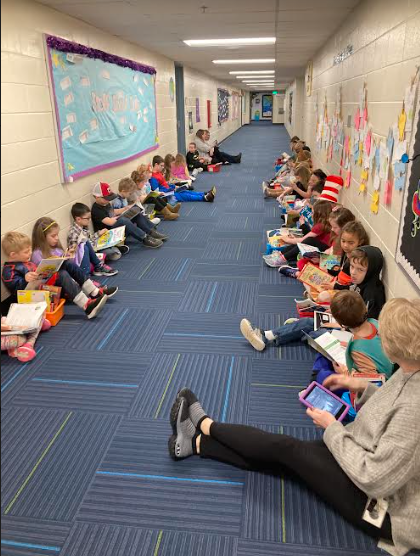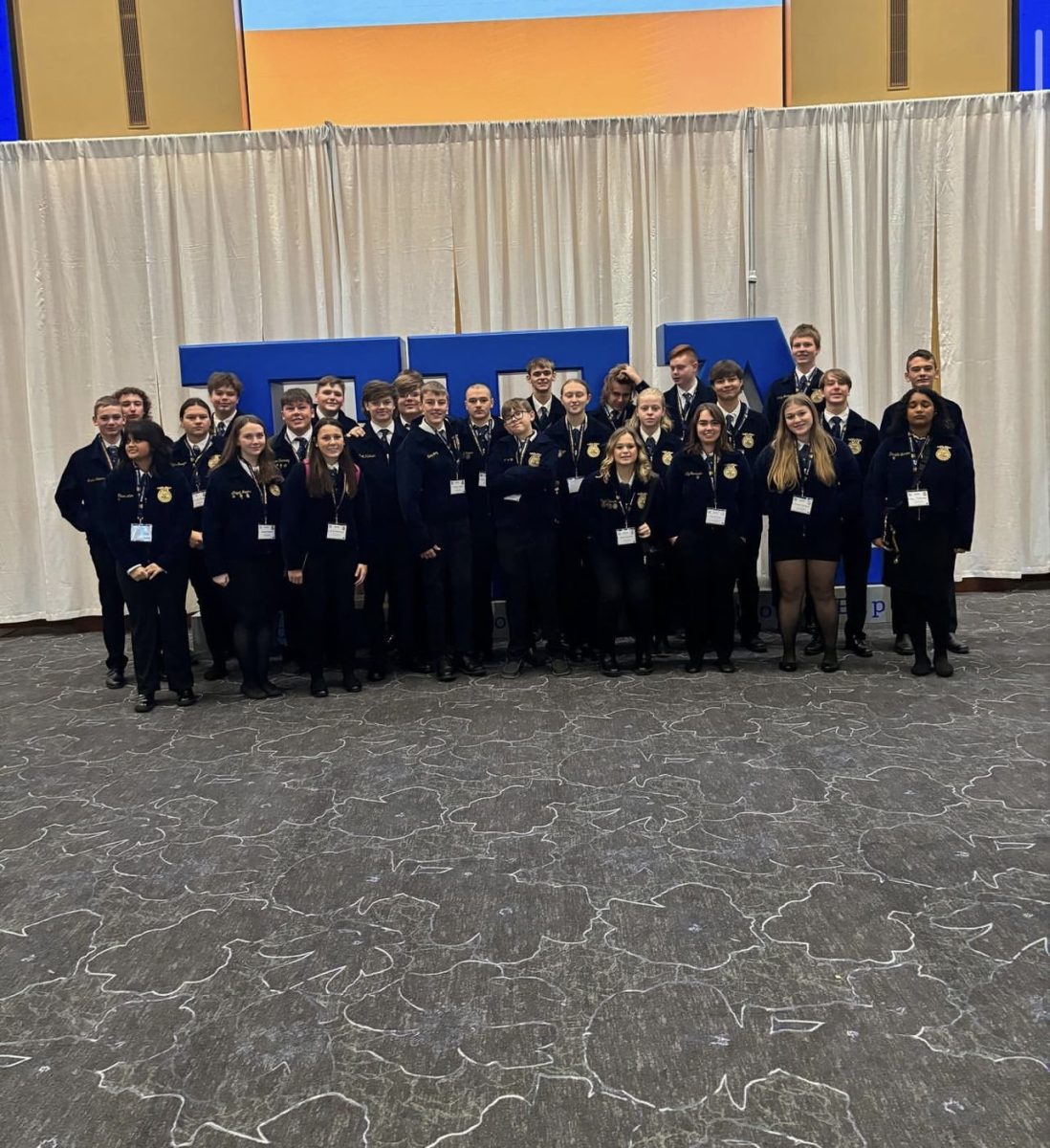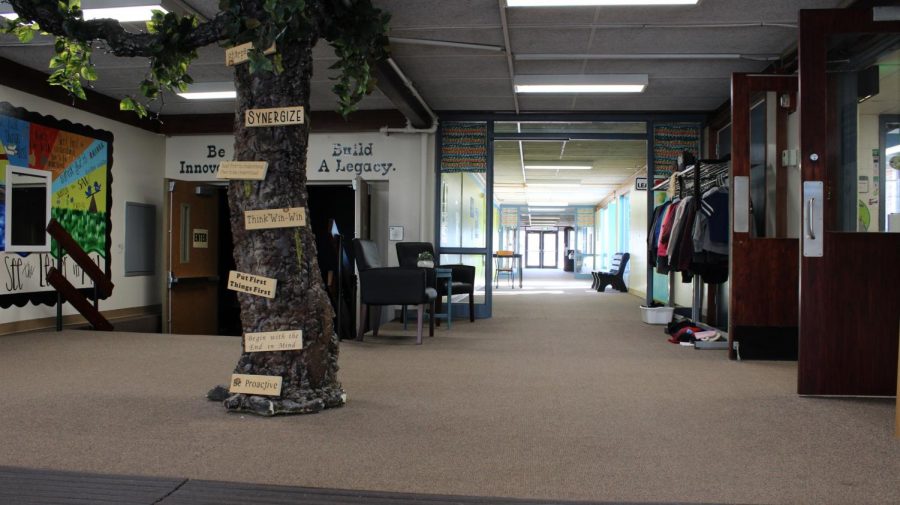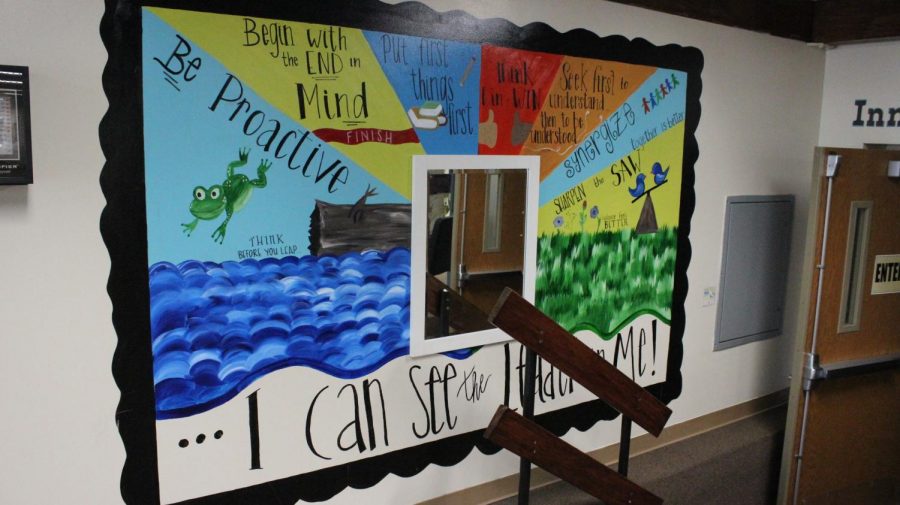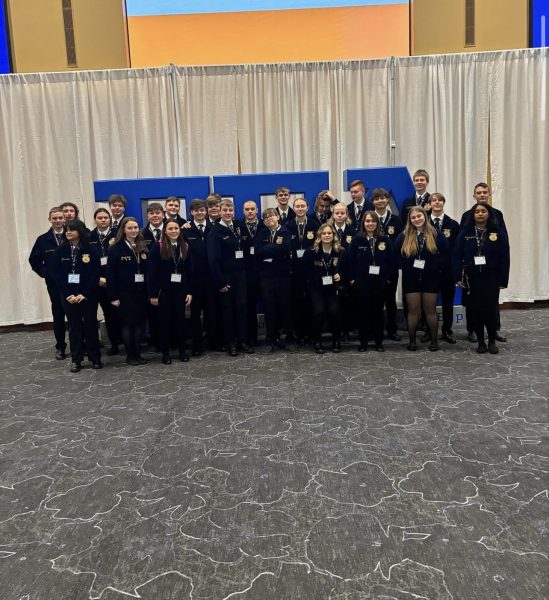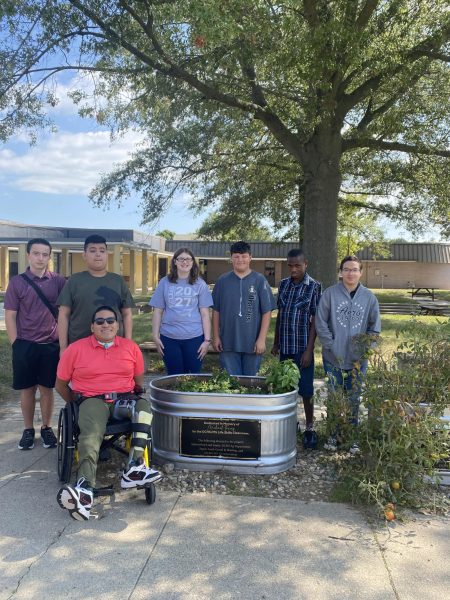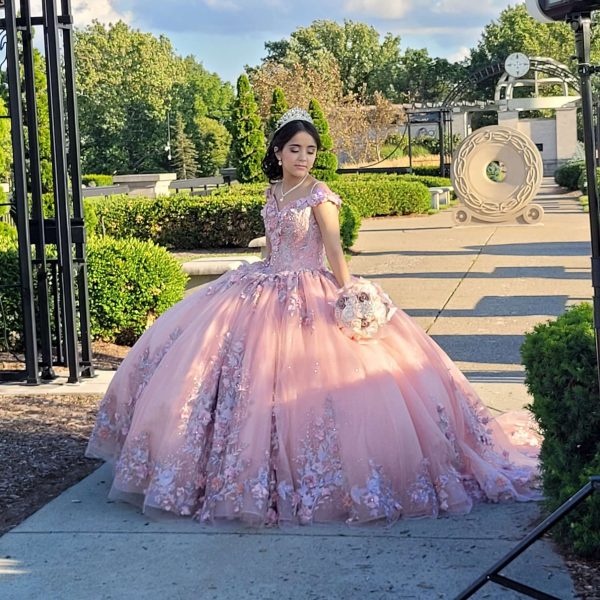One foot taller and seven years older: DCES through the eyes of a senior
The entrance to Delphi Community Elementary School is seen. Over the past few years, the school has changed, both in appearance and curriculum.
I walked into the doors of the school located at the bottom of the hill, and was greeted with a tree. A tree, that I might add, had not been there seven years ago, when I last attended the school. I had been in DCES only a few times since my departure from fifth grade, and it was obvious that not everything was the same as it once had been when I, or any current high schooler for that matter, had attended there last.
Principal Bill Shidler met me in the DCES main office, and quickly invited me to his office down a short corridor. Robots and random parts decorated a table set up in the office as he asked me what he could do for me. I told him my goal: to see how DCES has changed since we high schoolers had been there, both physically and in the programs offered, and where it was headed for the future. A gleam started in his eyes as I spoke, and he replied to me with child-like fascination: “Why don’t I show you?”
The first things Mr. Shidler wanted to show off were the passion projects kids had been working on last year. “Some kids like board games, so they play board games,” he said pulling out bins containing supplies for each passion project. He pulled out various other “passion projects”—art supplies, coding supplies, “we even had some girls who wanted to start a ballet club.”
As we walked through the school, one change was apparent everywhere. “So, there are a bunch more colors everywhere,” said Mr. Shidler, leading me down the first grade hallway. “It’s a lot more enjoyable to work and go to school with all these colors brightening up the place.” The colors were everywhere—the doors, the walls, the bulletin boards—it was as if a rainbow of colors was plastered everywhere In the late 2000s and early 2010s, when many current DCHS students attended DCES, it seemed as if the school was much more neutral in color. Within the past few years, the school has experienced a complete shift in the decor and environment that students are studying in.
Strolling past the library, I took a glance inside. “How much has changed in there?” I asked. Mr. Shidler gave me a grin, and we walked in. On the surface, not much had changed, though the bookshelves seemed much shorter. But, as Mr. Shidler led me deeper into the library, I saw that the area had evolved beyond just books. “We have tons of things to keep kids engaged,” he told me. “The LEGO wall is one of my favorites.” We walked in to where the LEGO wall was, and a class was in there, sitting on beanbags, futons, and other comfortable chairs. “We are very technology based in how we’re teaching our kids,” Mr. Shidler later told me. “But that still doesn’t mean that we aren’t getting them into books and other traditional sources of learning.” We are very technology based in how we’re teaching our kids, but we’re still getting them into books and other traditional sources of learning. — Mr. Shidler
My tour continued on towards the fifth grade hallway, and Mr. Shidler began to tell me a bit about how the curriculum was in the elementary school. “We really like to have the kids learn on their own,” he told me. “We’ve implemented many things [to help foster creativity in kids]. 20% of our seating is now non-traditional, [like yoga balls,] and we’ve placed a focus on the technology side of things.
Mr. Shidler led me into the Integrated Technology room, taught by Heather Hooper. “This is probably my favorite room,” he said excitedly. Students were sitting around the room, working on various projects connected to aspects of technology, showing a great deal of independence. As Mr. Shidler showed some of the projects and programs they were using, Ms. Hooper spoke up. “Mr. Shidler, I think you should check your email.” Mr. Shidler whipped out his phone, and once on email, saw that he had been emailed an invitation to play a game created by one of the students in that class. “I’ll have to check it out later, buddy,” he said with a grin.
However, though Integrated Technology and Project Lead the Way (PLTW) are two new “specials” taken by DCES students, they still do have traditional ones DCHS students remember. “Teachers can sign in to the library, and we still have specials like music, P.E., and traditional art,” he said, leading me past a wall decorated with student’s renditions of famous artwork such as Starry Night.
As we walked the final steps back to the office, I commented on how bright the courtyards seemed. “I can only remember once using those when I was in school,” I commented. The courtyards now are a rainbow of color, and seem much more inviting than they did in the past. Mr. Shidler agreed quite readily. “We were cleaning the place out, and we found all sorts of things out there. Now, our students use the courtyards quite frequently, from a student built greenhouse to outdoor labs.”
As we came back to the entrance of DCES, I asked Mr. Shidler what he was proudest of in the past few years for DCES. “Oh my gosh,” he said, taking a few steps back. “There’s so much!” After taking a few moments, he finally replied. “I think the biggest accomplishment is how we allowed our students to take control of their own education.” Indeed, one has to reminise how much students were in control of their learning as elementary students five to eight years ago. Either way, DCES students are in control of their education, and Mr. Shidler agrees: “We truly are a school of learners.”

Jordan is a senior at Delphi, and this is his third year writing for Parnassus. He is involved in Interact, SADD, NHS, Band, and swims on the swim team....


